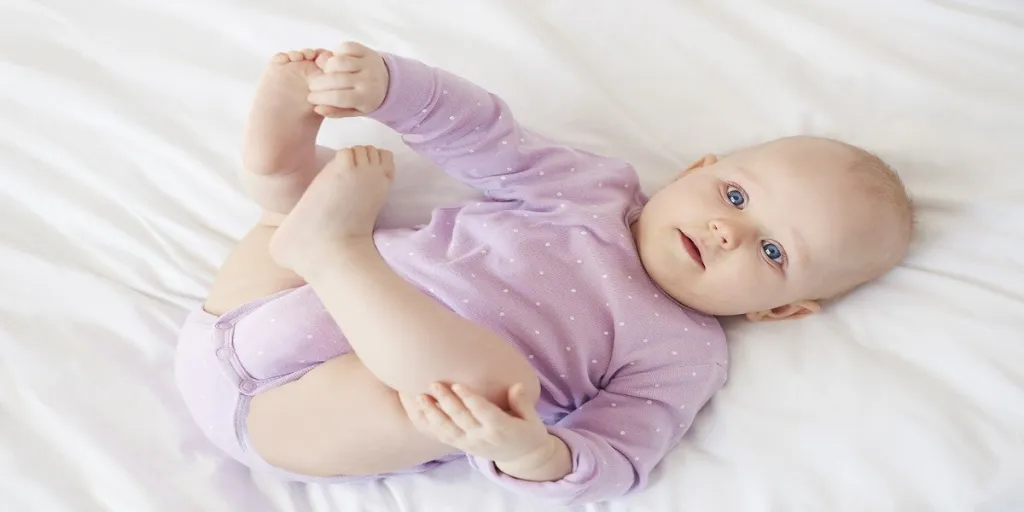Whether new moms pump their breast milk or feed their babies formula, they need feeding bottles. Occasionally, they may get overwhelmed with all the plastic baby bottle options on the market, mainly because they want the best for their children.
How do you leverage this demand to make profits? This article discusses five food-grade plastic baby bottle trends for new moms you can hop on today.
Table of Contents
Market growth for the baby bottle market
Five food-grade baby bottle trends for new moms
Moving forward
Market growth for the baby bottle market
Some new mothers have difficulty breastfeeding. It could be because they have sore nipples or don’t produce enough milk, among other reasons. During this time, they have the option of bottle-feeding their babies.
More women also work after childbirth and need baby bottles to store breast milk and formula.
Furthermore, the number of nurseries and kindergartens is increasing, so babies could spend more time away from their mothers. These plastic baby bottles are handy for when babies need to feed during this time. That’s another factor boosting the demand for baby bottles.
According to this report, the baby bottle market is expected to grow at a CAGR of 4.7% to reach $4.1 billion by 2027. Product innovation in this market is one factor driving this demand.
Market regions like North America and Asia Pacific are making the most of this demand, with North America having 24.7% of the global market share due to the increasing number of working women.
However, the same report reveals that the East Asia baby bottle market holds the leading market share due to rising breastfeeding issues, birth rates, and packaging innovations.
Five food-grade plastic baby bottle trends for new moms
Before buying, it helps to understand what type of bottle will be the best fit for babies. Choosing the right products will help babies have a better feeding experience and increase your sales. The following trends will give you an insight into what to buy.
1. Nipple material and shape
The right nipple material can help babies latch onto the nipple and boost active feeding.
Soft and flexible materials like latex are popular among parents. High-quality latex mimics breast tissue, giving babies a better sense of comfort. Some parents like silicone nipples because they’re durable and firm. Natural rubber nipples are toxin-free and have a more natural feel.
Nipple shape also affects a baby’s feeding experience. There are three main types of nipple shapes; the traditional, the wide, and the orthodontic.
The traditional shape is the most common. These nipples are long, skinny, and easy for babies to use.

Moms like the wide nipples because they resemble the shape of a breast, and breastfed babies can easily transition to them.
Meanwhile, the orthodontic shape has a slanted side that rests on the tongue and encourages the tonguing action that babies use when breastfeeding.

You might also have to consider the flow of the nipples along with their shapes. The nipples that come with a slow flow are for newborns, and as they grow, they can work their way up to faster flows.
Ask your customers what types of nipple materials and shapes they prefer. Then keep them at hand to provide recommendations to new and expecting moms.
2. Bottle shape
Suitable bottle shapes can help babies grip their feeding bottles better. They come in three common shapes; the standard, the wide, and the angled neck.
Some parents like the standard size because it fits into most bottle warmers and cup holders. In comparison, the wide-neck bottles are trending with parents who want the wider nipples that come with them. They want nipples that mimic human ones so their babies will not get nipple confusion and have trouble breastfeeding after using the bottle.

Additionally, parents like angled bottles because they prevent air from entering the nipple, which may cause the baby to choke. This helps the baby feed easier and has a less gassy effect.

Market each baby bottle type based on its benefits to maximize profit. Educate parents about the bottle shape that will work best for their babies based on their feeding habits.
3. Bottle size
As babies grow, their appetites grow as well. Depending on the age of the baby, offer small sizes (4-5 ounces) or big sizes (8-9 ounces).
Small bottles work best for a-few-month-old babies who drink 2-4 ounces per feed. However, they’ll feed more as they grow, so parents should also purchase larger bottles.

Note that bigger bottles come with faster-flowing nipples. Ensure new moms know this so they can adjust the product according to their babies’ feeding habits.
To make the most of this trend, wholesalers must stock up on bottle sets in different sizes. This will allow parents to switch up bottle sizes as their children grow.
These sets are also convenient because parents don’t have to go back multiple times to buy suitable sizes. Emphasizing their convenience will help increase sales.
4. Vent
New moms are usually concerned about their babies getting gas after feeding. Venting is a trending feature that helps prevent that. It reduces the risk of colic and gas in babies, eliminating their fussiness.

Anti-colic plastic bottles have vents that decrease the air babies swallow when feeding and also reduce spit-up.
Offer these bottles to parents with newborns that usually get gas and colic after feeding. It makes feeding better for the baby and helps reduce parents’ concerns.
5. Convenience
Working mothers must ensure they feed their babies when they get back home. Due to their tiredness, feeding can be stressful at this point. Breast pumps that attach directly to bottles make pumping easier. There are bonus points if these bottles are easy to clean too.

Moreover, mothers want BPA-free baby bottles for their babies so they won’t have to worry about their health. Bisphenol A, or BPA, is an industrial chemical used to produce plastics. Its presence in plastic baby bottles can affect thyroid function and brain growth. A BPA-free product simply means Bisphenol isn’t in its components.
You should educate new moms on the importance of BPA-free plastics and highlight matching products to get them to patronize you.
Moving forward
New and experienced moms alike need food-grade plastic baby bottles. As a result, they’re consistently in demand. As a business, you can cater to mothers’ and babies’ needs while making a profit.
That said, if you’re buying baby bottles, ensure the shape encourages a smooth transition between the bottle and breast, so it doesn’t affect babies’ feeding. Also, it’s easier to feed babies through a bottle if it has a vent and can be attached to a pump.
These trends will save you time and money when finding the perfect bottles for your customers. Keep doing research in the future to catch up on trends and studies about plastic baby bottles.





 Afrikaans
Afrikaans አማርኛ
አማርኛ العربية
العربية বাংলা
বাংলা Nederlands
Nederlands English
English Français
Français Deutsch
Deutsch हिन्दी
हिन्दी Bahasa Indonesia
Bahasa Indonesia Italiano
Italiano 日本語
日本語 한국어
한국어 Bahasa Melayu
Bahasa Melayu മലയാളം
മലയാളം پښتو
پښتو فارسی
فارسی Polski
Polski Português
Português Русский
Русский Español
Español Kiswahili
Kiswahili ไทย
ไทย Türkçe
Türkçe اردو
اردو Tiếng Việt
Tiếng Việt isiXhosa
isiXhosa Zulu
Zulu